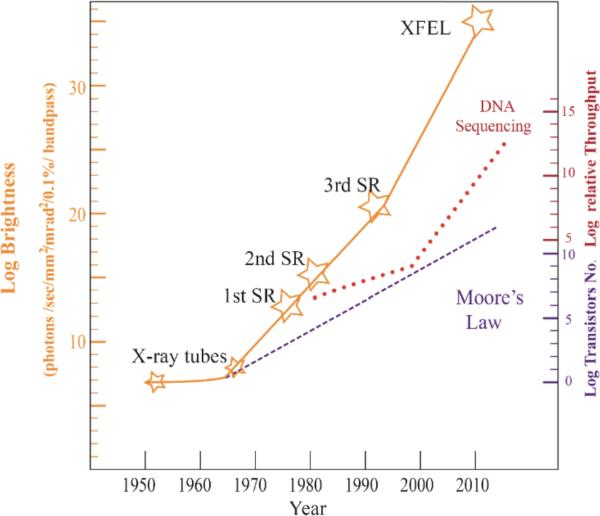Figure 2.
The three representative technology fields with most rapidly increasing rates. All three have directly contributed to structural biology. In fact, among the three, electronics governed by the famous Moore's law has had the slowest but most stable exponential growth since 1970s. It has increased more than 10 orders of magnitude over the last 40 plus years and is responsible for the explosive growth of computers, IT and telecommunications industry. The red line represents the recent rapid growth of the so-call next generation sequencing (NGS) which has increased about 10 orders of magnitude just over the last 10 years. DNA (gene) sequences direct protein synthesis that is indispensible in recombinant DNA technology and therefore in solving protein structures. NGS makes it possible to get an overall estimation of how many proteins are in biological systems and that we might need to crystallize and visualize crystal structures. X-ray source intensities have increased more than 20 orders of magnitude since 1980s from the dedicated X-ray production source of 2nd generation SR to current XFEL sources.

